JEWELLERY AND ACTIVISM
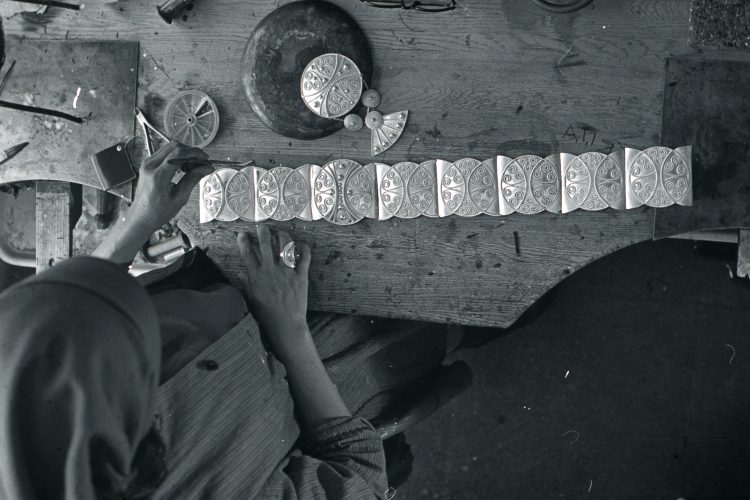
Rosa Taikon crafting her degree work at Konstfack, 1967 – Photo ©Björn Langhammer, courtesy of Birgitta and Anna Langhammer
– About the Exhibition Roma Jewellery Tradition – Rosa Taikon at the Nationalmuseum in Stockholm
In the process of creating the exhibition, Roma Jewellery Tradition – Rosa Taikon, Rosa Taikon’s expressive jewellery became a point of departure for a demonstration of Roma history and heritage as well as a platform for the civil rights struggle of the time. This article introduces the practice of Rosa Taikon and the content of this vibrant exhibition, which took place at the Nationalmuseum in Stockholm in 1969.
On 23 October 1969, the exhibition Roma Jewellery Tradition – Rosa Taikon (Zigensk Smycketradition – Rosa Taikon[1]) opened at the Nationalmuseum in Stockholm, Sweden. In the process of creating the exhibition, Rosa Taikon’s expressive jewellery became a point of departure for a demonstration of Roma history and heritage, as well as a platform for the struggle for civil rights. The show took place at a time when traditional art and craft practices were radically questioned and exhibition practices were expanding, turning the events into venues for activism. The vibrant display under discussion was a good example for this kind of engagement, yet it is little remembered today, despite its unique content and radical methods.
Rosa Taikon – Crafting with traditions
In 1961, Rosa Taikon enrolled at Sweden’s largest art and design academy, Konstfack University of Arts, Crafts and Design in Stockholm, where she would receive a traditional training in applied arts, with a specialization in metalwork. Taikon was 35 at the time, and would graduate in 1967.
Preserved sketches she made at Konstfack make it possible to trace how her training prepared her for a career in the applied art industry, by learning the skills necessary for making hollowware and jewellery. The same sketches reveal her experiments with her family tradition. Rosa Taikon would mention how as a child she watched her father, Istvan Taikon, work at night (R. Taikon 1969). Alongside running a travelling funfair, Istvan Taikon also tinned copper pots. In his spare time, he would make objects of art, crafting jewellery and other articles for himself and his family. His works appear in Rosa Taikon’s Konstfack sketches.
Already at Konstfack, she developed a unique mode of expression that combined the work of the elders with modernist expressive art jewellery. She created clear-cut and bold shapes accentuated by granules and filigree details. In her jewellery she aimed to ‘preserve some of the old Roma jewellery craft’ and at the same time observe how its ‘fine qualities and decorative patterns could be transferred to a modern form, without losing its specific character and style’ (R. Taikon 1966). Not meant to be subtle ornaments, her pieces of jewellery are expressive wearable objects.
Civil rights activism
In 1963, during Taikon’s time at Konstfack, her sister, Katarina published a semi-autobiographical book, Roma Lady (Zignerska) (K. Taikon 1963). It attracted a lot of attention as it was the first book in Sweden by a Roma woman to talk about the history and living conditions of her people across the country. In the 1960s, some of the Roma were still living in camps outside the cities, in poor conditions. Anti-Roma sentiments and institutionalized racism were rampant. Katarina Taikon’s book had considerable impact, and she would become a well-known public figure and a powerful representative of the Roma civil rights movement (Mohtadi–Taikon 2019). Although Katarina was a more public person, Rosa would also have an active role in the civil rights struggle. Among other actions, they took part in the organization of The Romani Society (Zigenarsamfundet) in 1964, campaigned extensively, and initiated the first Roma magazine, The Journal of the Roma (Zigenaren: amé beschás: zigenarnas tidskrift).The civil rights activism generated substantial interest in cultural institutions. For example, in 1966 The Royal Library presented the exhibition Roma (Zigenskt), showing Roma literature with photographs taken by Katarina Taikon’s husband, Björn Langhammer, as well as jewellery by Rosa Taikon. In 1968, a non-Roma group staged an experimental play, Romani People (Zigenare), at Dramaten (The Royal Dramatic Theatre), which combined a general discussion of structural racism with examples of the civil rights struggle (Berg 1968). It was in this context that Bengt Dahlbäck, the director of the Nationalmuseum invited Rosa Taikon to have a solo show at the museum.
A collective act
That a jewellery artist who had recently graduated from Konstfack was given the opportunity to stage a solo exhibition at the Nationalmuseum, an important national venue, was something unique. Rosa Taikon transformed this invitation into a collective act, staging the exhibition in collaboration with her then partner, architect Bernd Janusch, her sister, Katarina Taikon, and Katarina’s husband, photographer Björn Langhammer. Alongside the display of Rosa Taikon’s jewellery, they also used the event as an opportunity to inform the public about the Roma heritage and to further their civil rights work.Staging a collective act was very much in the mood of this politically active period, when art institutions were used as a platform for grass-roots actions. Perhaps one of the best-known Swedish examples was the exhibition The Model: A Model for a Qualitative Society, staged by urban activists in collaboration with the artist, Palle Nielsen, at Stockholm’s Modern Art Museum in 1968 (Nielsen–Larsen 2010). They transformed the museum’s central hall into a playground for children, reflecting the conviction of the urban activist collective, Aktion Samtal (Action Dialogue) that the extensive reconstruction of Stockholm served the interests of capital and consumption rather than the people (Lundahl 1969; Stahre 1999). There were diverse activities within, and even more outside, the art institutions, and Rosa Taikon was involved in some of them. She made a contribution, for instance, to the so-called International War Crimes Tribunal (or Russell–Sartre Tribunal), which was conducted in 1967 at Stockholm’s Folkets Hus (and subsequently in Roskilde, Denmark). The Tribunal concerned itself with war crimes committed by the United States in Vietnam (K. Taikon 1967), and to fund the initiative, about a hundred artists, including Rosa Taikon, donated works to an auction.
Creating the exhibitionBernd Janusch’s exhibition design was centred around two abstract tents that marked out two areas, which dominated the room and were used to display different themes. One of these areas was dedicated to jewellery, whereas the other contained material that concerned itself with a wider context. The jewellery section was divided into four parts, two showing the work of Rosa Taikon and one displaying pieces by Bernd Janusch. The last part was dedicated to what they called ‘traditional jewellery,’ consisting of historical works from Rosa’s family. In the second area, visitors could learn about the history and cultural heritage of the Roma, with archival images and narratives illustrating their way of life and ‘social background,’ as well as attesting to a long history of anti-Roma sentiments and institutionalized racism. This exhibition was as much a history lesson as a jewellery show.The subjects were further explored in the small catalogue. Also, an extra issue of The Journal of the Roma was published, with a front page that featured a drawing from the exhibition. It showed a circle that contained the inscription ‘increased equality,’ with ‘increased’ crossed out, and the words, ‘also for the Roma’ added in handwriting. The drawing came from a conference of the Social Democrats, the leading political party at the time, whose theme was ‘increased equality.’ The handwritten intervention was a simple but effective way to call attention to the current situation of the Roma in Sweden and the need to make their rights part of the programme of the Swedish welfare state.When the exhibition opened, Rosa and Katarina Taikon were in the middle of a campaign to stop the deportation of a large group of Roma (Mohtadi–Taikon 2019). They made use of the exhibition as a platform to call attention to the campaign. Posters, as well as the catalogue, declared the demand to stop the deportation plan. The exhibition included satirical drawings of politicians as well as placards with critical messages aimed at the government and the migration office, calling attention to the inconsistency and racism of the Swedish state with regard to the immigration of the Roma. There were several images of people from the group that faced deportation, displayed alongside messages that criticized the Swedish government. Among other things, there was a figure of a fictitious medal that was to be awarded to the Swedish government ‘for sustained and faithful service in the spirit of racism.’
Presence and absence
Despite its radical and contemporary approaches, Roma Jewellery Tradition – Rosa Taikon still awaits recognition in current history writing on the exhibition practices of this period. Compared to other exhibitions staged at major Swedish institutions at the time, this show was unique in many ways, as regarded its content and material, if not the artistic strategies.
At the time of the exhibition, many Swedish makers were distancing themselves from precious materials such as silver and sought cheaper, more ‘radical’ alternatives. From the perspective of the ‘radical crafters,’ Rosa Taikon’s jewellery may, perhaps, have seemed conservative. However, her silver jewellery has a specific agency that plays into how she makes her jewellery and how they are read. She made beautiful objects of adornment, with a great eye for detail and a precision process that could produce luxury objects. The material and process were key to conveying the quality Rosa Taikon sought, both as an expression of her as an individual and as a manifestation of her heritage.
At the same time, there was a stark contrast between the content of the exhibition and the institution that hosted it. Although the objects in Rosa Taikon’s exhibition attested to a high-quality craft that had been practised in Sweden and beyond for a long time, no one in her family was represented in the museum’s collections. This omission prompts questions about what the nation in the ‘National’ Museum includes. This is the same museum of the nation that has practised institutionalized racism against the Roma. Roma Jewellery Tradition – Rosa Taikon staged a collective act that highlighted this violence in both its current and historical form, while demonstrating a craft tradition that was now claiming recognition as part of the heritage of this nation.
Postscript
Apropos of the exhibition, the Nationalmuseum acquired the necklace, Baro Ihlo. However, no other piece by Rosa Taikon has been added to the collection since then, the museum has not opened a new chapter for Roma culture in Sweden over the more than five decades that have passed since the exhibition closed. Instead, it is a regional institution, Hälsinglands Museum, that maintains Rosa Taikon’s legacy in Sweden today, with a Rosa Taikon archive and a permanent exhibition of her work.
There is also growing interest in her work internationally, such as at the Museum of Civilizations of Europe and the Mediterranean (Mucem) in Marseille, which acquired five pieces for their collection in connection with Barvalo, an exhibition that was co-curated by Julia Ferloni, the museum’s Curator for Heritage, Anna Mirga-Kruszelnicka, Deputy Director of ERIAC, and Jonah Steinberg, an associate professor at the University of Vermont. The largest exhibition of its kind in a public museum in Europe, Barvalo showcased the rich and complex history of the Roma and the diversity of Romani populations in Europe. Rosa Taikon’s jewels (now part of the collection) were featured among the 200 exhibits, including works of art and documents. The curators also decided to exhibit images of Katarina Taikon’s civil rights activism, and to highlight her as an author of children’s books, whose main character, Katitzi, was of autobiographical origin.
<<Rosa Taikon jewellery exhibited in the frame of BARVALO, May 10-September 4 at the Mucem – Museum of Civilizations of Europe and the Mediterranean>>References
Berg, Gudrun et al. (1968), Zigenare: Dramatens lilla scen (theatre performance), premiered 21 Sept. (Stockholm: Kungl. Dramatiska teatern).
Lundahl, Gunilla (1969), ‘Vårt behov av kreativitet.’ Form, 8.
Mohtadi, Lawen and Taikon, Katarina (2019), The Day I Am Free/Katitzi (Berlin: Sternberg Press).
Nielsen, Palle, and Larsen, Lars Bang (2010), The Model: A Model for a Qualitative Society (1968) (Barcelona: Museu D’Art Contemporani de Barcelona).
Stahre, Ulf (1999), Den alternativa staden. Stockholms stadsomvandling och byalagsrörelsen (dissertation) (Stockholm: Stockholmia).
Taikon, Katarina (1963), Zigenerska (Stockholm: Wahlström & Widstrand).
Taikon, Katarina (1967), ‘Tribunalen,’ Zigenaren: amé beschás, 1, 1–2.
Taikon, Rosa (1966), ‘Konsthantverk, sång, dans, musik. Något om zigenarnas kulturarv,’ Sociala Meddelanden, 3–4: 100–106.
Taikon, Rosa (1969), ’Fars arbeten,’ in Taikon, Rosa and Janusch, Bernd, Zigensk smycketradition – Rosa Taikon (Stockholm: Nationalmuseum), 14–16.
[1] For ease of reference, the original, historical term, ‘zigenare’ is kept throughout in the titles of Swedish sources.


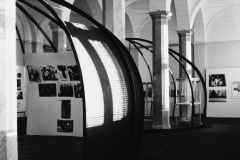
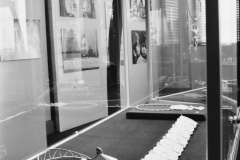
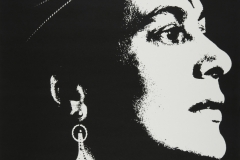
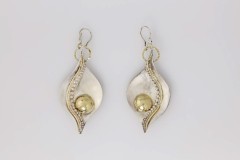
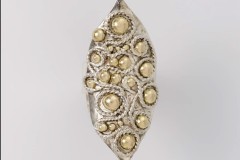
Leave a Reply